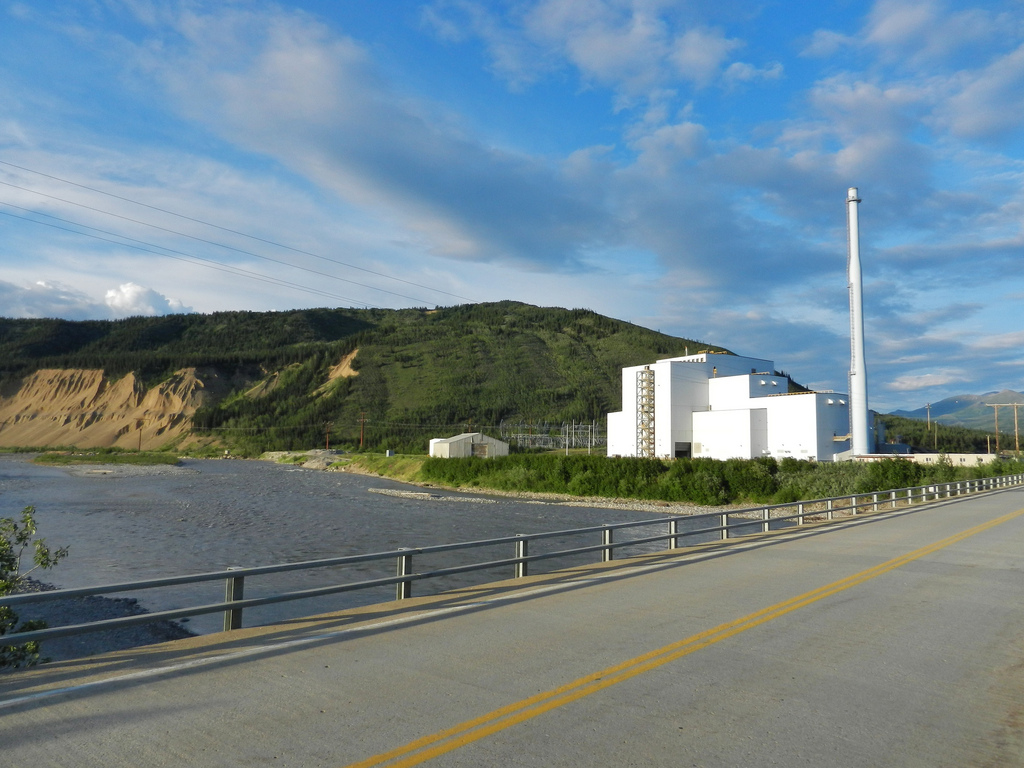
Alaska utilities and policymakers are puzzling over President Obama’s proposal to cut carbon pollution from power plants and what the rules would mean for Alaska. Around the country, the proposal is viewed as a push to get states to clean up their coal plants, but that may not be the easiest way for Alaska to meet its target.
Look around the state for big carbon dioxide emitters and it’s easy to point the finger at Fairbanks. Southeast Alaska is largely dependent on hydropower and Southcentral has natural gas. But in Fairbanks and other parts of the Interior, about a third of the electricity comes from coal. Cory Borgeson, CEO of Golden Valley Electric Association told KUAC this week its rate-payers should expect higher bills if it has to install new emission controls.
“You go in and put in additional controls to take out CO2, or limit those emissions, and – it’s just hard to speculate on the cost,” Borgeson said. “But, ultimately, it’s a big cost.”
If the rules go into effect, Alaska would have to cut carbon emissions from power production 26 percent by 2030. But Fairbanks isn’t in this alone. The state would have to develop a plan to meet its carbon target, and Chris Rose, executive director of Renewable Energy Alaska Project, says clamping down on smokestacks is just one option.
“There are tremendous opportunities both on the efficiency and the generation sector for electricity that would be applicable to a state implementation plan,” Rose said.
The EPA target is a reduction in carbon intensity, the rate of carbon production per megawatt of power, not the amount of emissions. Without touching Fairbanks’s coal plants, Alaska, Rose says, could lower its carbon intensity by adding more hydro or wind power, or maybe with geothermal and tidal generation. The regulations also give credit for cutting demand. Rose
says the state’s ongoing initiative to make buildings more energy efficient will help.
“The public buildings the state owns, over 5,000 buildings, currently have a mandate to be retrofitted … by 2020,” Rose said.
Alaska Energy Authority Deputy Director Gene Therriault says his organization is still studying the proposed regulations, but he says the pressure to cut carbon would clearly fall on the Railbelt.
The diesel-fired generators in the Bush are too small to be included in the carbon regulations. He wonders whether the federal government would accept an Alaska plan that doesn’t reduce coal plant emissions.
“We’re not sure yet exactly how the EPA is going to apply these rules, if it is just a blended, emissions per mega-watt generated,” Therriault said.
One thing on Therriault’s to-do list is to calculate how far Alaska has already come in meeting the target, with wind generation and improved efficiency. Therriault says the Susitna-Watana dam, still in the application phase, would also move the state toward the target. Alaska’s energy policy, signed by Gov. Parnell, calls for producing 50 percent of the state’s electricity from renewables by 2025. Therriault says if that comes to pass, Alaska would likely meet its EPA carbon goal, five years ahead of schedule.
“Yeah I think if we did meet that goal by and large that would put us into compliance,” Therriault said.
He says upgrading the Railbelt’s transmission lines would also help. With expanded capacity, Therriault says the utilities could move electricity around more efficiently, add wind generation and accept power from independent producers, although it would cost some $900 million.
“Very positive cost-benefit analysis, even if Susitna does not get built, but that more robust transmission system would mean that more energy could be sourced from cleaner, lower-cost sources in the Railbelt,” Therriault said.
You can expect to hear a lot more about the carbon rules as Election Day nears.
“Yesterday, President Obama announced new costly environmental regulations. It’s all part of his radical energy plan.”
In Washington, Republican groups immediately saw carbon as the new healthcare, a controversial Obama policy to hang on the necks of Democratic senators they hope to oust in November. This is a robocall the National Republican Senatorial Committee is running against Sen. Mark Begich in Alaska and against Democrats in three other states.
“It’s not surprising Mark Begich stands by Barack Obama’s costly regulation…”
Begich says he wants to make sure the state has the flexibility the EPA is promising, but he’s not condemning the proposed carbon rules.
“At least at this point it seems to us, it does not affect rural Alaska in anyway, and second as you know the goal of the state is to get 50 percent renewable energies by 2025, so it’s very possible we’re already on the way,” Begich said.
Alaska’s Republican delegates to Congress, Sen. Lisa Murkowski and Congressman Don Young, both say the regulations are likely to hurt the economy.
